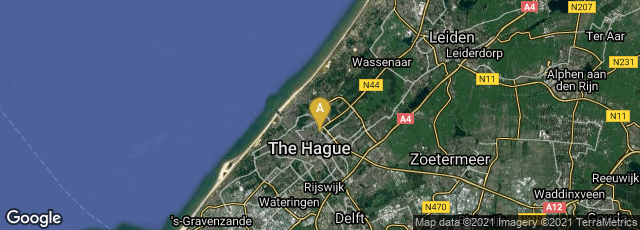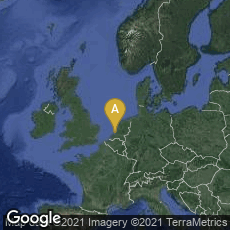

A: Centrum, Den Haag, Zuid-Holland, Netherlands
In 1656 French physician, chemist, botanist, and savant Pierre Borel published the first documentary history of the invention of the telescope and microscope in De vero telescopii inventore, cum brevi omnium conpiciliorum historia. . . . accessit etiam centuria microscopicarum in The Hague (Den Haag, 's-Gravenhage). Borel's work also contained Christiaan Huygens's preliminary announcement in anagram form of his discovery of the rings of Saturn and of the Saturnian moon Titan. Borel's purpose in compiling his history was to publish the evidence obtained by William Boreel, French ambassador to the Dutch States, supporting the claims of Dutch spectacle-maker Zacharias Jansen to the invention of both the telescope and compound microscope. Jansen's first claim is not generally recognized (German-Dutch lensmaker Hans Lippershey is traditionally credited with inventing the first telescope), but Jansen probably did invent the compound microscope, the original of which Boreel saw in 1619.
One of the several documents that Borel collected for his history was a letter from Christiaan Huygens entitled "De Saturni luna observation nona," dated March 5, 1656, recounting his discovery of the Saturnian moon Titan and giving in anagram form his solution to the problem of the mysterious variable "arms" of Saturn. Huygens had concluded that the "arms" were really a single ring surrounding the planet, a solution that, three years later, he announced in Systema Saturnium. By publication of the anagram he was able to establish his priority before full disclosure of the discovery.
Hook & Norman, The Haskell F. Norman Library of Science and Medicine (1991) no. 268.